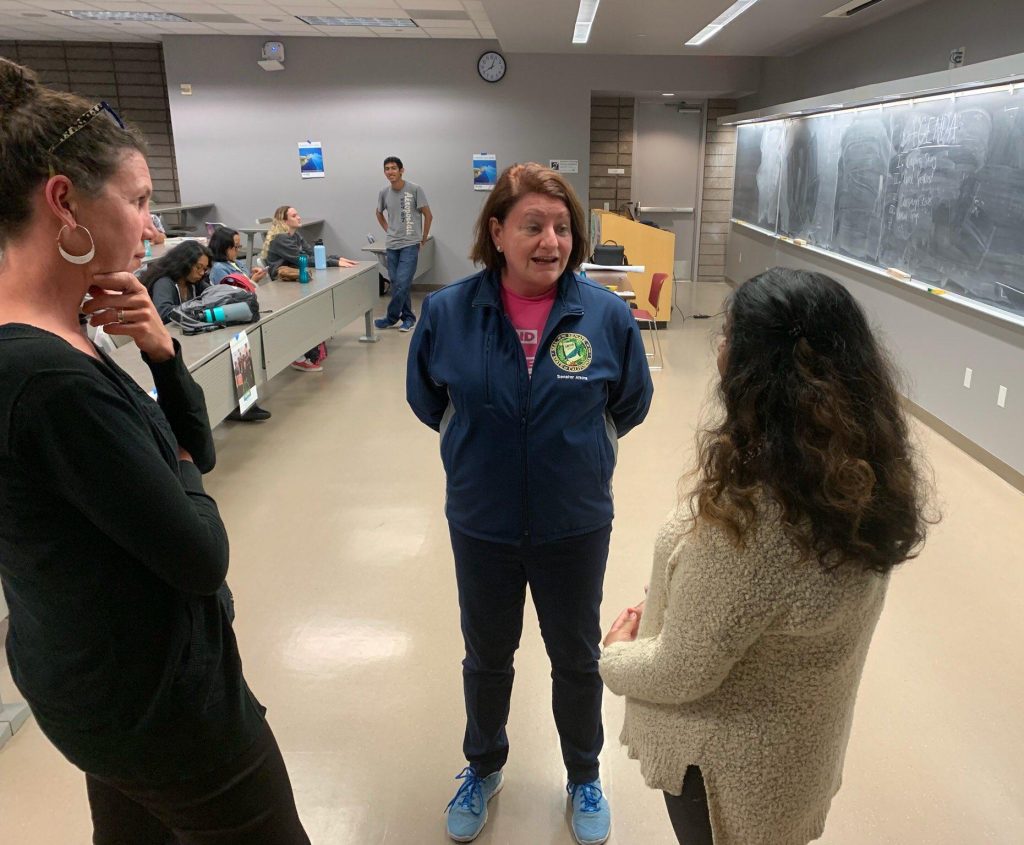
By KENDRA SITTON | Uptown News
One advantage of the California Senate pro Tempore hailing from San Diego is that issues affecting the southernmost areas of the Golden State are being addressed at the highest level of government. As she jokes, California does not end in Los Angeles. Senator Toni Atkins has been in San Diego talking to constituents and other stakeholders while the Legislature is on break. As she looks ahead to next year, addressing coastal erosion is at the top of her agenda.
She brought up the issue of climate change at a recent talk at the Point Loma Association when a constituent asked about the erosion of Sunset Cliffs amid fears the bluffs will collapse.
“The individual sort of responded, ‘Well, that’s not what I’m talking about.’ I’m like, ‘Well, that is what we’re talking about.’ Because the wave patterns and the sea level rise — climate change is all impacting that,” Atkins said in an interview later that day.
As leaders in the public space struggle to not only mitigate climate change, they also must figure out how to talk about it. The world getting apocalyptically hot can seem abstract, so at these town hall meetings, Atkins is working on describing how a hotter planet has already affected the daily experiences of people in California.
“I love the big stuff, but you gotta be able to bring it all the way down to focus on what it means for your life today, tomorrow,” Atkins said. “I’m so excited about being able to do that on climate change.”
While she is back in San Diego, Atkins is also meeting with people at the forefront of climate activism. On Oct. 9, she addressed UC San Diego students in a chapter of CALPIRG (California Public Interest Research Group).
“They’ve [the students] been a driving force on trying to get plastics out of our waterways and to reduce the use of plastic period,” Atkins said. “We’re talking about sea level rise. We’re talking about things like the investor-owned utilities and hardening infrastructure to protect us from high winds and Santa Anas… Now we’re seeing every fire is more expensive. That’s all climate change.”
Already, in last year’s budget, Atkins got another $1.5 million for Scripps Institute of Oceanography to study the impacts of climate change.
“We’re seeing the results. So I think a lot of what I’m excited about next year is we’re going to get more into what we need to do all throughout California to monitor weather patterns, to see how we selectively figure out how to turn off the energy for the shortest period of time — not to disrupt people’s lives, but to protect public safety and public health,” Atkins said.
In addition to addressing climate change, Atkins is focused on combatting the housing crisis and homelessness. She is also excited about Governor Gavin Newsom’s development of a master plan for aging as California prepares to accommodate an aging population. She noted 50% of California’s population will soon be over the age of 50.
— Kendra Sitton can be reached at [email protected].









